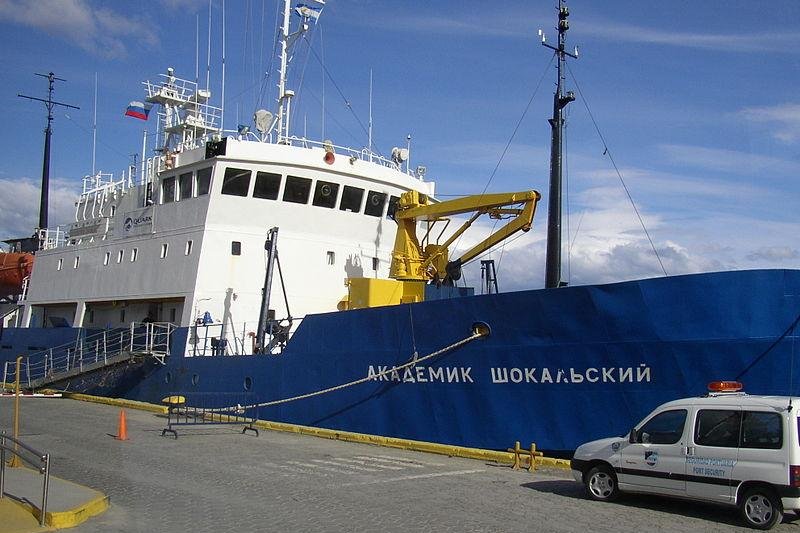The Akademik Shokalskiy, a Russian ship, remained stuck in Antarctic ice for several weeks in 2014. Photo by de Benutzer Diedrich/CC.
SYDNEY, Dec. 26 (UPI) -- Just a year ago, the ship Akademik Shokalskiy became trapped in the ice floes of Antarctica. It had arrived carrying a crew intent on both recreating and honoring the scientific expedition of Douglas Mawson a century prior.
But only two weeks after its departure from New Zealand, the 2013 version of the Australasian Antarctic Expedition had ground to a halt. A year later, the scientific data that was collected is being translated, analyzed and published -- offering the latest snapshot of the ecological health of a portion of the icy continent, ground zero for the effects of global warming.
When ice-breakers couldn't free a path for the stranded vessel, a Chinese helicopter known as Xue Ying executed a series of rescue operations. But while most of the crew went home after just two-plus weeks, a core group of sailor scientists remained to steer the ship out of trouble once conditions improved.
The experience, though brief and drama-filled, has produced scientific results.
"Once we got back home and made sure everyone was all right, we got on with working up the data and getting a whole load of papers ready for submission," expedition leader Chris Turney recently told The Guardian. "It took nearly six months to get all the samples through quarantine."
Sadly, the new results don't paint a pretty picture of the Antarctic. Collected samples turned up an excess of plastic garbage and observations suggested the wildlife populations are dwindling -- already vulnerable birds there are having to do more with less.
Put simply, things are changing -- and fast.
"You see this remarkable transition with the expansion of sea ice," Turney said. "A lot of kelp and other life on the seabed is dead or dying. We're seeing instead much of the deeper flora and fauna, as they come up from the deeper seabed because there's an ecological niche to be filled."
While the initial rescue operation distracted media attention and resources from other scientific expeditions, Turney is more appreciative and hopeful than regretful or apologetic.
"There was disruption and we were incredibly grateful to everyone for their help. Fortunately though, from what we learned later, it seems that a lot of work was not harmed," Turney told The Guardian.
He says future expeditions will need to capture the public's imagination moving forward -- in order to ensure important scientific expeditions are funded.















